How to fold a Brochure or Pamphlet? Here’s 11 different ways
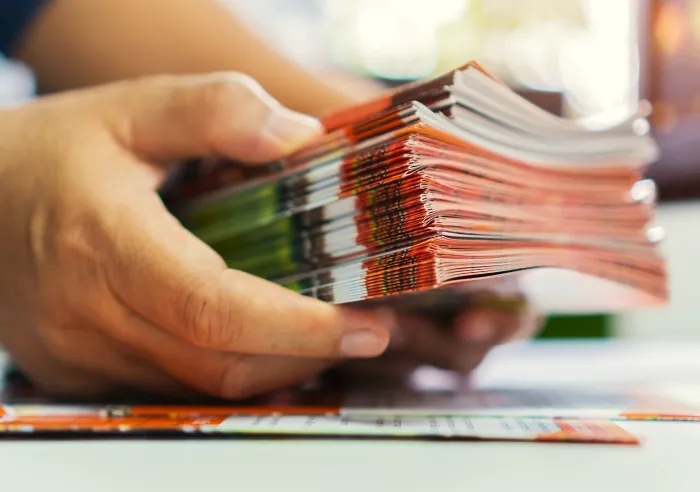
estimated reading time: 6 minutes
Folding Options for Brochures and Pamphlets
There are a variety of ways to fold a brochure or pamphlet.
Folding reduces the physical size of these pieces, making them more convenient
to hold and read. In many cases, the size reduction also allows these printed
documents to fit into a pocket or purse for easier transport.
Below are descriptions of 11 popular folding methods. An illustration of each folding type is also shown. In
addition to brochures and pamphlets, many of these folds work well for other types
of printing, such as instruction sheets or restaurant menus.
1. Half-Fold
The Half Fold is one of the most basic folding techniques.
To achieve this fold, the sheet is simply folded in half. This method uses a
single fold to divide the document into two parts of equal size. The Half Fold
is also known as a Bi-Fold.
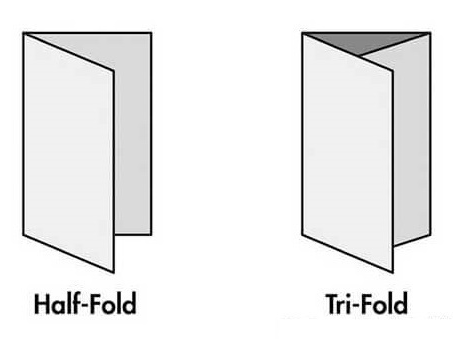
2. Tri-Fold
The Tri-Fold is one of the most widely used folding methods
for brochures and pamphlets. To create a Tri-Fold, one end of the sheet is folded
inward until its edge is approximately one-third of the way across the width of
the document. The other end is then folded across to align with the opposite
edge. The Tri-Fold method uses two parallel folds to divide a document into three
panels of like size. The Tri-Fold is also known as a Letter Fold, C-Fold, or
3-Panel Roll Fold.
3. Z-Fold
The Z-fold is aptly named because the document will resemble
the letter "Z" after being folded. To make a Z-Fold, one end of the sheet is folded inward until its
edge is one third of the way across the width of the document. The other end of
the sheet is then folded in the reverse direction of the first fold until it
aligns with the opposite edge on the back side of the sheet. The Z-Fold method
uses two parallel folds (made in opposite directions) to create three equal panels.
The Z-Fold is also known as a 3-Panel Accordion Fold.
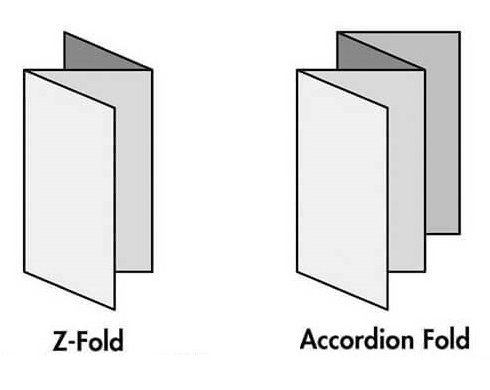
4. Accordion Fold
The Accordion fold is often used when the document is to be
divided into 4 or more panels (a 3-Panel Accordion Fold is referred to as a Z-Fold).
Because each subsequent fold is made in the reverse direction of the fold
preceding it, the folds do not gather any excess bulk and the document stays
compact. It also opens quickly and easily. When folding a sheet with the
Accordion method, the first fold is made in one direction, the second fold is
made in the opposite direction, and this alternating pattern continues until
the document is folded to the desired size. The Accordion Fold is also known as
a Fan Fold or Zigzag Fold.
5. Gate Fold
The Gate Fold adds uniqueness to a printed piece. A Gate Folded
document has two parallel folds that create three panels, a wider center panel
flanked by two narrower panels on each end. Each of the narrower panels (the
gates) fold over a portion of the center panel. Most of the time, the two gates
are designed to meet in the middle of the larger center panel when folded.
However, sometimes these two gates are purposely sized so that they partially
overlap at the center. Also, because the center panel is about twice as wide as
each gate, it can display larger graphics than a document folded into panels of
equal widths. The Gate Fold is a somewhat unusual format, but opening the folded
gates to reveal the center content can provide a captivating presentation.
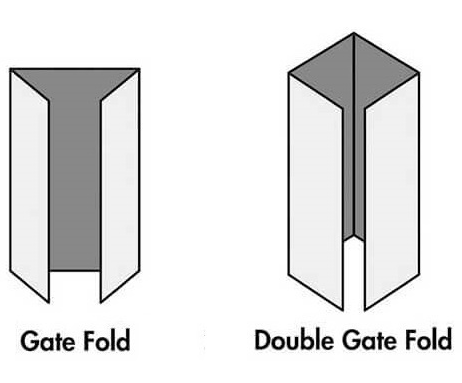
6. Double Gate Fold
The Double Gate Fold takes the Gate Fold design one step
further. Whereas the Gate Fold has a larger center panel and two narrower side
panels, the Double Gate Fold has four panels of equal size. The two outer panels
fold inward to meet in the middle and then the entire unit gets folded inward
again. As such, the Double Gate Fold uses three parallel folds instead of two. This
design allows the content to be revealed in an even more dramatic way since it
basically requires two sets of "gates" to open.
7. Roll Fold
A Roll Fold is often stated as a 4-Part Roll Fold, a 5-Part
Roll Fold, etc. A Tri-Fold (Item #2 above) is actually a 3-Part Roll Fold but
goes by the more common name of Tri-Fold. A Roll Fold is created by first folding
one edge of the paper inwards. The edge is brought inward by a distance
slightly less than the desired width of the finished brochure. The new edge
created by this fold line is then folded inwards, similar to the first fold made. This continues until all the panels of the
brochure have been formed by folding. In order for the document to fold completely flat, each
section of a Roll Form must be slightly wider than the section preceding it.
Once completed, the content on each section of the document will be gradually revealed
as each flap is "unrolled." The Roll Fold is also known as a Barrel Fold.
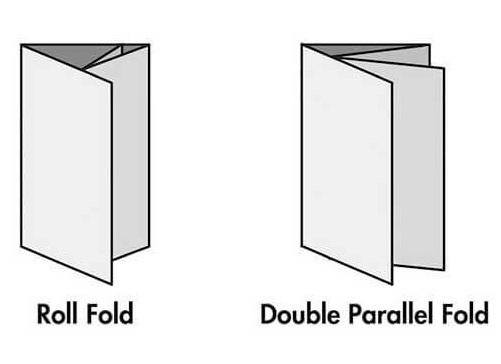
8. Double Parallel Fold
The Double Parallel Fold looks sort of like two Half-Folds
nested together. It is similar to a booklet format but is folded instead of
bound. The Double Parallel Fold is a versatile format because it can either display
content panel by panel or the content can be designed to span across multiple
panels. A Double Parallel Fold is created by using two Half Folds in
succession. The sheet is first folded in half, then folded in half again. This creates four equal-sized
panels that can be navigated with relative ease.
9. Vertical Half Fold
The Vertical Half Fold is the same as the regular Half Fold
(Item #1 above) except the sheet is oriented vertically and then folded in
half. This divides the sheet into two equal parts but each part is taller and
narrower than if it had been folded with the regular Half Fold. The Vertical Half
Fold is also known as a Vertical Bi-Fold.
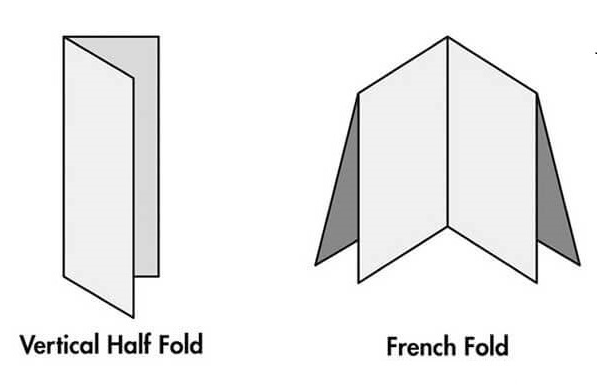
10. French Fold
The French Fold is often used when the document contains a
large image - such as a product beauty shot or detailed diagram - that needs ample
space to be displayed. This method starts by using a Half Fold with a horizontal
fold line. Then a second Half Fold is used, but this time with a vertical fold
line. The two fold lines, made at right
angles to each other, divide the sheet into four equal quarters. The French Fold
is also known as a Right Angle Fold or a Quarter Fold.
11. Map Fold (also known as a Half Fold with Roll Fold)
A Map Fold combines elements of a Half Fold and a Roll Fold.
It starts by using a Half Fold with a horizontal fold line. Then it uses the
Roll Fold technique to fold in the ends. This method can drastically reduce the
physical size of a large document to a more convenient size. The Map Fold is
also known as a Half Fold with Roll Fold.
Folding plays an important role
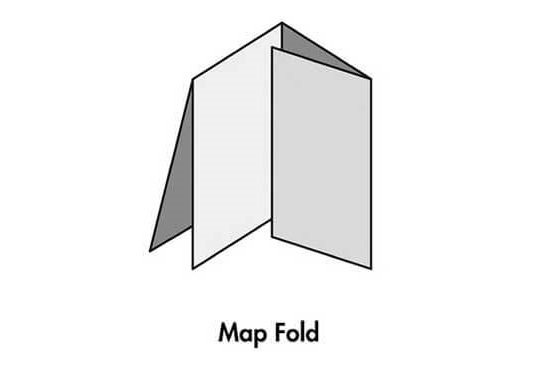
Whether a printed piece is promotional in nature or strictly
informational, most people don't put a lot of thought into how it should be folded.
However, folding plays an important role in how your content is presented to
your audience.
Choosing the right folding technique for your print project can
greatly enhance its visual appeal, readability, and overall effectiveness.
Color Vision is here to help!
Since 1984, Color Vision Printing has helped thousands of
customers with a wide variety of custom printing projects. We are eager to help
you too!
So whether you need brochures, pamphlets, flyers, catalogs,
manuals, books, maps, menus, or some other type of printing, give Color Vision a
call at 800-543-6299 to discuss your next printing project.
Or, if you know your specs and are looking for a price quote, simply complete our Quote Request form and we will email you a quote. As always, we look
forward to working with you!
Related Articles
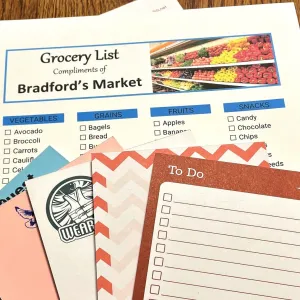
Custom Printed Notepads: Easy and Affordable Marketing Tools
Read This Article
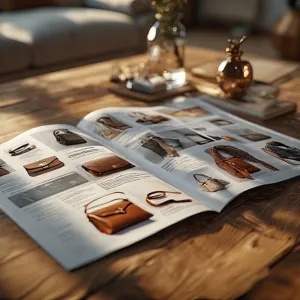
7 Key Advantages Print Marketing has over Digital Marketing
Read This Article

Print Marketing: Exploring the Allure of a Soft Touch Finish
Read This Article

Print Marketing: Maximize Engagement and Sales with QR Codes
Read This Article